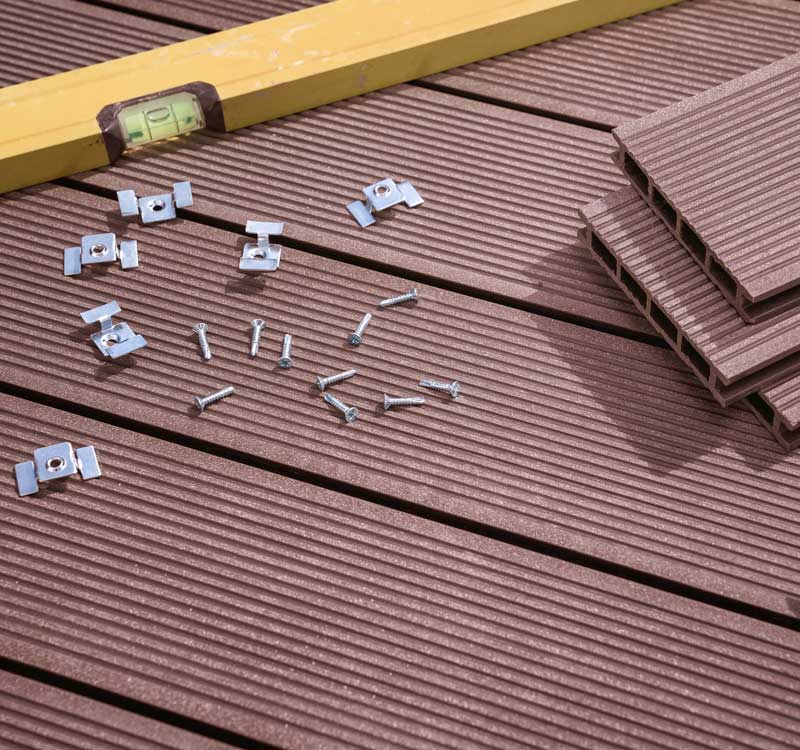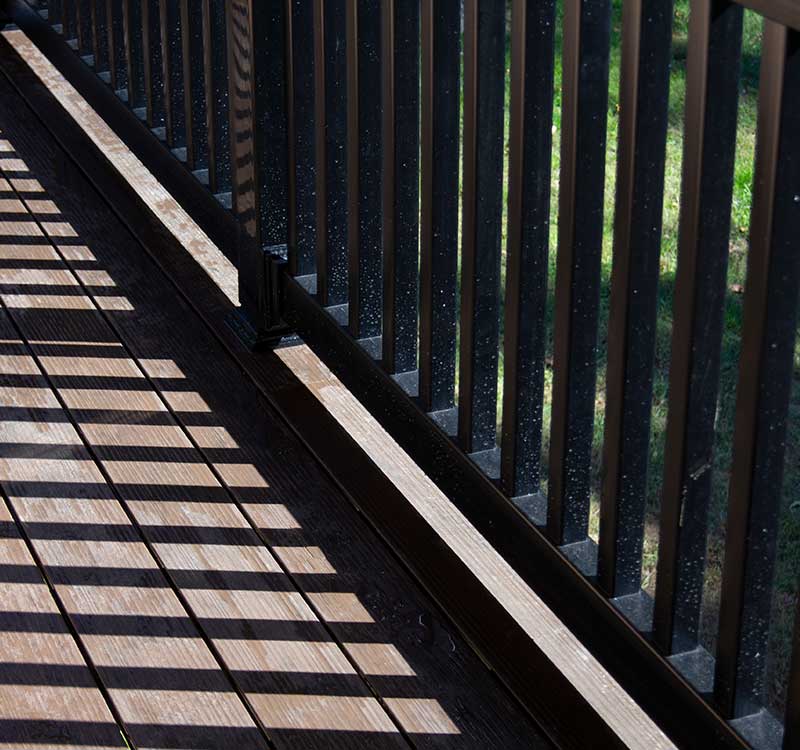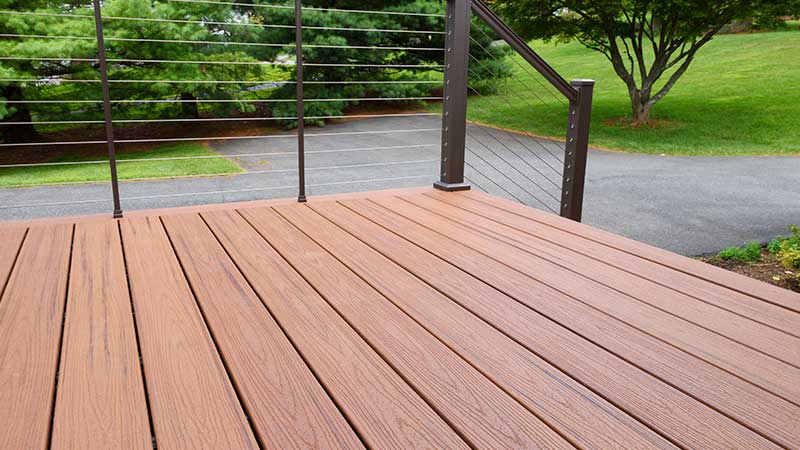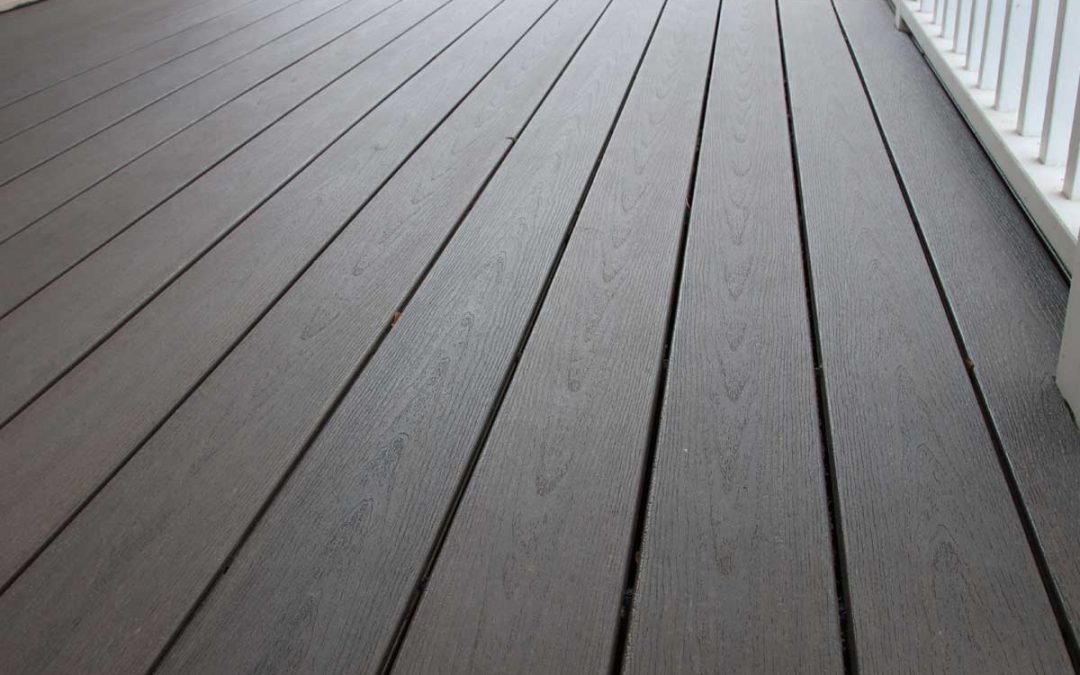Each day, more users are opting for composite decking for convenience and replacing their old wood decks with this material. In this blog, we help you determine whether you can use composite decking on a front porch. Learn more below!

Benefits of Composite Deck Boards
Easy To Maintain
One of the most significant advantages of composite decking is that it requires minimal maintenance. Many homeowners lean towards composite decking because it doesn’t require the laborious annual maintenance that wood requires to keep its appeal, which involves sanding, staining or painting, and sealing.
Your front porch only needs a rinse with soap and water or regular pressure washing to remove debris or algae. This is a major benefit for homeowners who prefer to enjoy their porches rather than maintain them.
More Cost-Effective Long-Term
Following the same line as before, since composite decking requires the least maintenance and the lack of need for frequent repairs, staining, or sealing, the costs of acquiring a composite front porch are lower in the long run. Over the years, the savings add up, versus a wood porch where the costs are the ones to add up.
Versatility
When it comes to aesthetic appeal, composite decking doesn’t fall short. In fact, since it’s made from scratch from recycled materials, it comes in a wide range of styles and colors that mimic the look of real wood, making it a great choice for many outdoor projects, including, of course, a front porch.
Additionally, composite decking can be designed to have consistent color and texture, providing a uniform and polished look to your outdoor space.
Resistant
Composite decking is known for its long-lasting properties. Unlike wood, it doesn’t splinter, warp, or rot, making it a durable option for high-traffic areas.
The material is designed to withstand the elements, including UV rays, rain, and snow, which helps it maintain its integrity and appearance over time. It is also resistant to moisture, insects, and fungi.

Downsides of Composite Deck Boards
Heat Retention
Many composite deck users have a common complaint about composite decking: its heat retention. Composite decking can get very hot, especially in the summer months, making it uncomfortable to walk on with bare feet.
While this may be a big problem when building a deck, a front porch is typically covered and counts with shade that keeps your front porch floor cool. You can also mitigate this effect by choosing lighter colors, considering a shade structure, or choosing heat-resistant options.
Fades Over Time
If your porch is covered, it will most likely keep its color longer. For extra protection when your home faces west or when there is no roof over your porch, you can get composite boards with UV protection.
Higher Upfront Cost

Limited Customization
Considerations for Using Composite Decking on a Front Porch
Frame Condition
Along with the frame, it’s crucial to inspect the posts and joists. These structural elements must be in good condition to support the new decking. Replace any damaged or weakened parts to ensure safety and stability. This is especially important if your porch is elevated, as structural integrity is key to preventing accidents.
Roof
If your porch has a roof, you won’t need to worry as much about drainage, which is a significant consideration for open decks. A covered porch helps protect the decking from direct exposure to the elements, prolonging its lifespan. However, it’s still important to ensure proper ventilation and drainage to prevent moisture buildup under the decking.
Special Components
Climate Considerations
Steps, Stairs & Railings
A Robust Material Paired With Superior Services
The two biggest factors in obtaining a premium-grade deck or porch are materials and installation technique. Now that you know if composite decking is right for you, you can move on to sourcing expert deck and porch installation.
In Norfolk, VA, and surrounding areas, JM House Remodeling LLC is your go-to choice. We can install, repair, and replace composite decking edit with precision and competitive prices. Make your consultations today!


